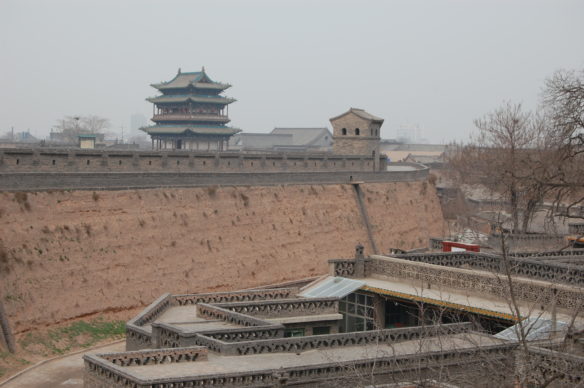
On a nine-day trip to China with the GHF (Global Heritage Fund), I explored some truly incredible, off-the-beaten-path historical sites, including three days at my favorite stop, the stunning ancient walled city of Pingyao.
Treasures of China’s Heritage: Touring with the Global Heritage Fund
(Fourth of a Seven-part Series)
Fujian and Shanxi
I recently had the privilege of taking a nine-day trip to China in the company of board members of the Palo Alto-based Global Heritage Fund (GHF)—an organization devoted to supporting underdeveloped rural areas worldwide. Although I’d previously traveled extensively in China, this unusual excursion was uniquely enriching and memorable. It’s my pleasure to share this experience with you in a series of recollections illustrated primarily by my personal photographs. Links to the other installments in this series can be found at the end of this article.
After resting up from our first magical day in historic Pingyao, we looked forward to more experiences in the ancient walled city, including an up-close encounter with the walls themselves.
DAY 5: THE ANCIENT CITY OF PINGYAO IN SHANXI

VISITING THE CITY WALLS AND GATE TOWERS
On the fifth day of our tour, we explored the Pingyao city walls, beginning at the north end with Gongji, one of six gates. The north and south ends each feature one gate, while the west and east walls have two, each with a tower. Each gate has three surrounding walls to protect it from invaders and prevent wind and sand damage.

One of the few Chinese cities whose city walls are still intact, as we walked along Pingyao’s more than 600-year-old wall, we saw the gate tower in the distance.

Near the gate, we saw more evidence that tourists have discovered the city: Locals were catering to them with donkey and carriage rides.
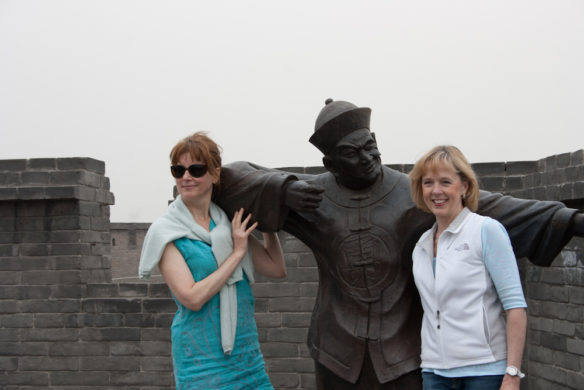
Lucie Jay and Cathy McMurtry pose with an ancient archer. At every turn, this city offers another spectacular photo opportunity.
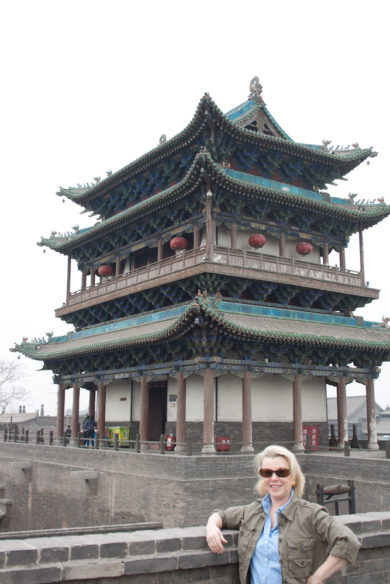
Jeanne Lawrence in front of one of the six gate towers. From its height, we had a bird’s-eye view of some of the narrow, less traveled streets.
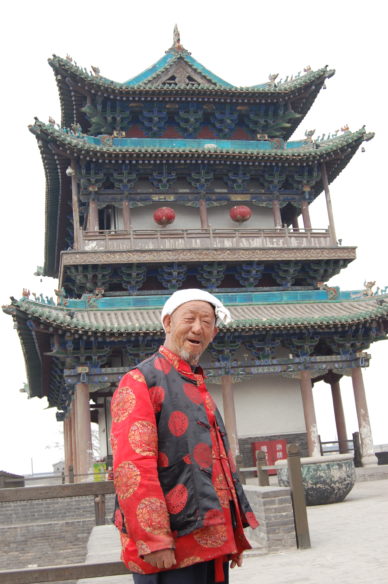
One of the characters we met along the way.
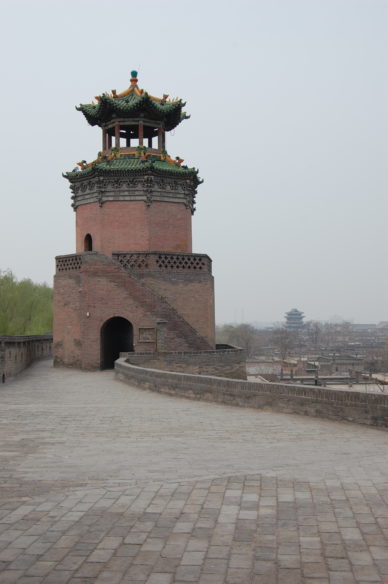
Rebuilt in 1370, Pingyao’s wall incorporates six towers, seventy-two watchtowers, and more than 3,000 crenels or battlements, all surrounded by a moat.

Thanks to its still-intact walls and the ancient architecture within, Pingyao is considered the best-preserved ancient city in China.
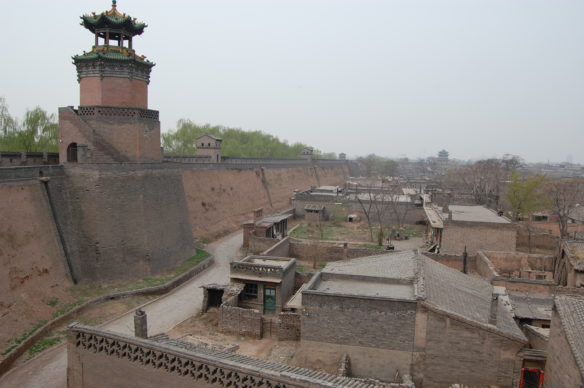
The walls and towers were built to protect the city from raiders who might want to plunder the “Wall Street of China.”

The view of modern Pingyao in the distance contrasts with the alluring ancient city.
CHINA’S FIRST BANK
We stopped at West Street, once the most famous banking street in the world and home to Rishengchang, China’s first and biggest bank.
Pingyao was the financial center of China during the late Ming (1368–1644) and Qing Dynasties (1644–1912). Merchants from Beijing, traveling along the Silk Road, exchanged their silver and gold for “checks” here so they wouldn’t be robbed. Our present-day personal banking protocols have their roots in this system.
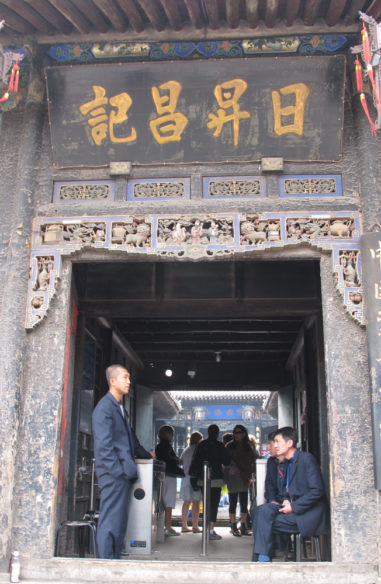
The entrance to the Rishengchang Exchange Shop, or Draft Bank, which established modern Chinese banking in 1823.
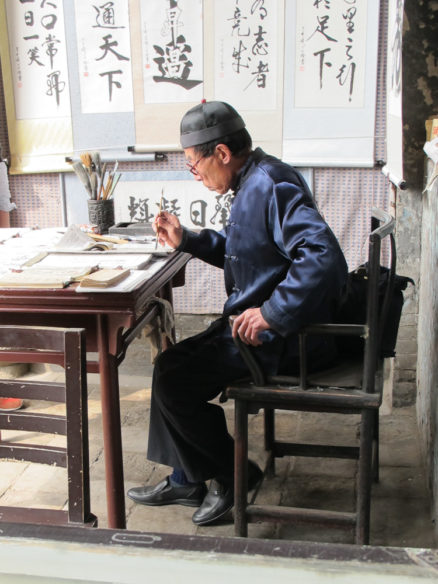
The furnishings in the former bank evoke the past, as does this costumed “money counter.”
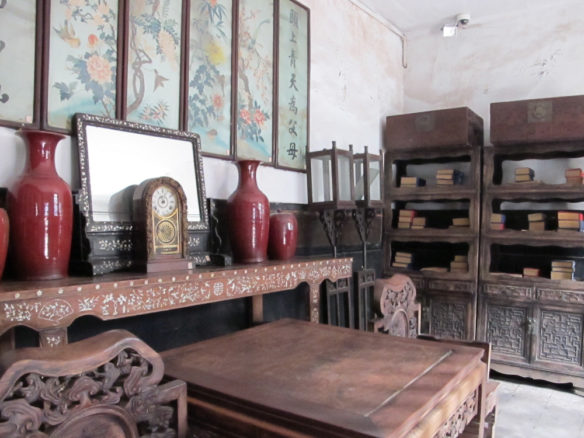
The 100-room building is now the Chinese Draft Bank Museum, with exhibits depicting the history of the city.
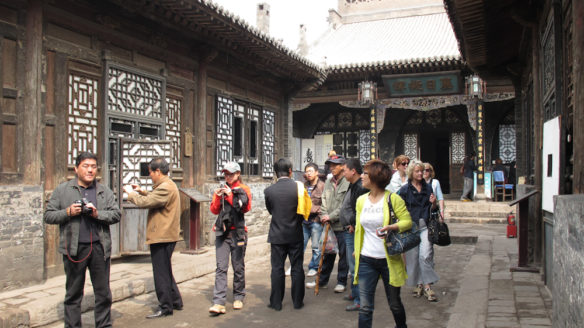
Typical of the city’s historic architecture, the Draft Bank Museum consists of a complex of small buildings positioned around a central courtyard.
SHOPPING ON MING-QING STREET
Among the tourist trinkets and street-food stalls at the local market on the main street of Ming-Qing, we discovered some fine craftwork by local artisans.

Historic Ming-Qing Street, the southern avenue of Pingyao’s Ancient Town, is lined with more than 100 shops, restaurants, and bars located in historic houses.

These cobblers creating custom-made shoes are among the many artisans of Ming-Qing Street.

Visitors can drink in the local atmosphere, shop for inexpensive souvenirs, and observe ancient craft techniques such as hand-weaving.
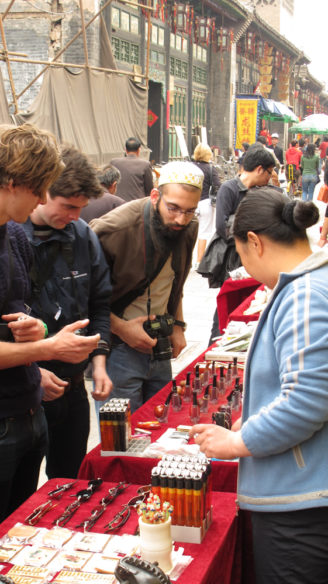
Foreign visitors attempted to negotiate with local vendors.

This worker was cutting and packaging handmade candy.

I like to enhance my shopping experience by sampling local snacks and street food as I go.

Local lacquerware, fashion jewelry, vases, screens, and so-called “antiques” tempt shoppers.
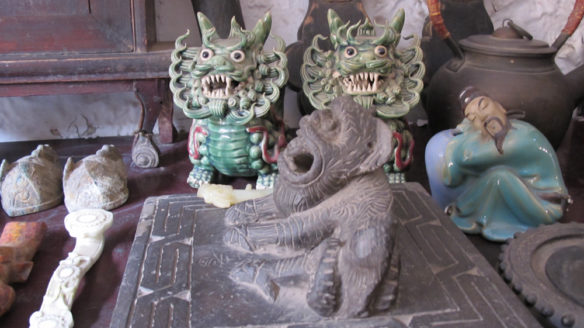
In addition to souvenirs, furniture and porcelain of many vintages were for sale.
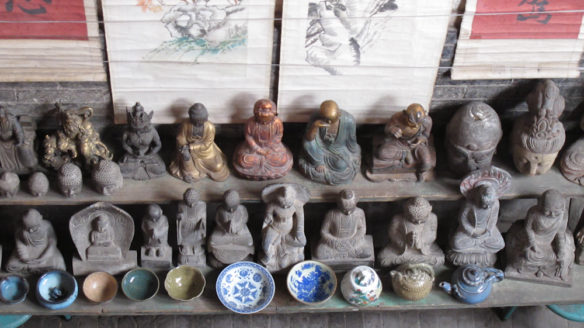
Collectors of porcelain or Buddhas can find much to choose from.
A VISIT TO A LACQUER STORE
Our eventful second day in Pingyao included an opportunity to observe some extremely skilled lacquer craftsmen at work. Their exquisite wares were not inexpensive, but the huge selection of beautiful pieces included something to tempt each of us.

The lacquerware shop was in the heart of the city, in yet another historic courtyard house.
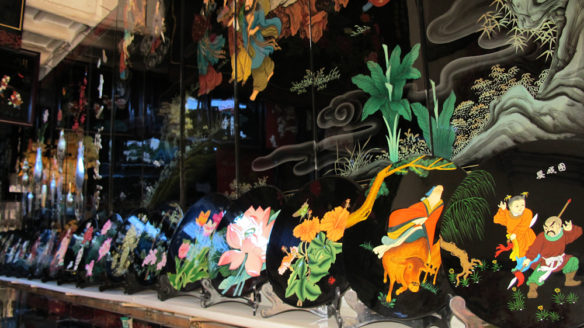
“Lacquer” is a wood varnish that cures and dries to a hard, durable finish.

Chinese lacquer is typically derived from the resin of an indigenous tree, Toxicodendron vernicifluum, known as “the lacquer tree.”
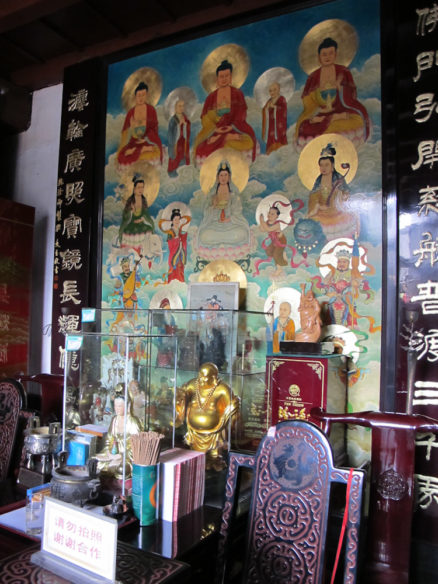
The Chinese were the first to produce lacquerware, some 6,000 to 7,000 years ago. Pieces dating back as far as the Neolithic period have been discovered in China.
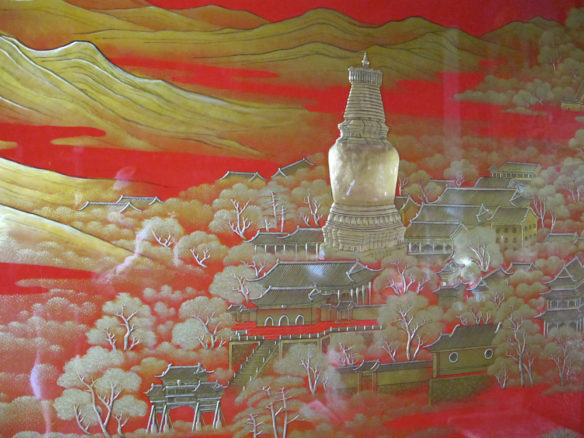
Today’s sophisticated Chinese lacquer techniques were developed during the Shang Dynasty (1600–1046 B.C.E.).

Craftsmen work painstakingly on masterpieces that can take years to complete.
LUNCH IN A COURTYARD HOUSE
Since the province is known for 200 types of pasta made of buckwheat, potatoes, and other starches, we planned to sample a few at lunch.
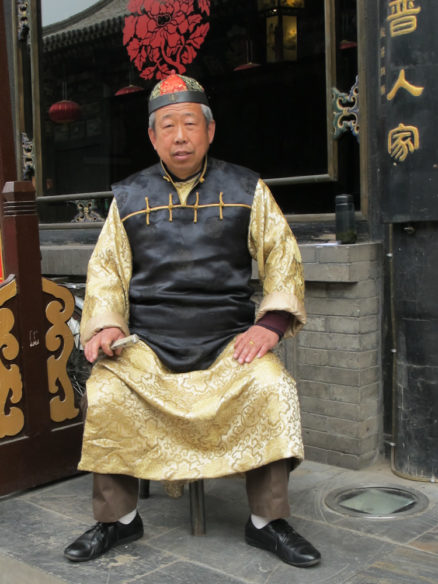
The costumed greeter added to the restaurant’s allure, though his modern shoes seemed out of place.

The restaurant was located in a courtyard house, an ideal adaptive reuse that will help preserve it.

Our lunch was served in a former living room.
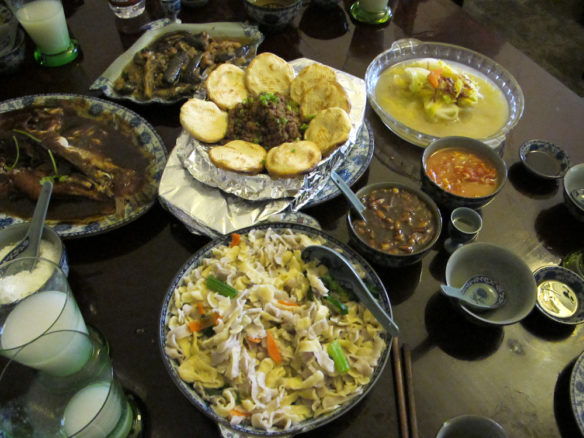
One advantage of traveling with a group is being able to sample and appreciate a range of local dishes at each meal.
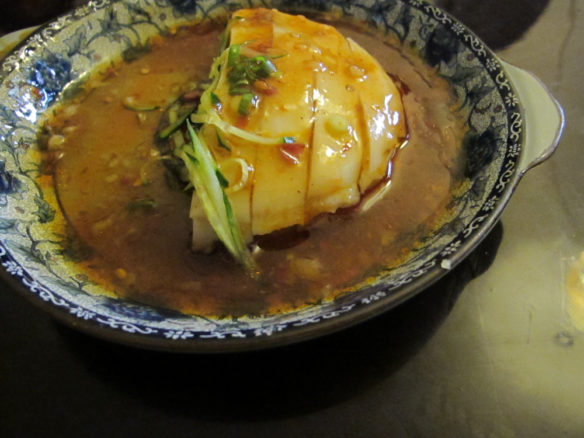
Along with some of the region’s many pasta and noodle dishes, we enjoyed succulent spiced and sliced chicken.
GHF’S RESTORATION OF A COURTYARD HOUSE
GHF is responsible for the first privately funded authentic restoration of an ancient courtyard house. Located at 12 Mijia Xiang, the structure housed a kindergarten from 1963 to 2009. The project was meant to become a model for others.
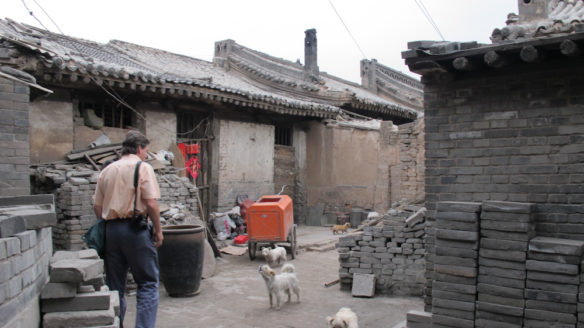
After lunch, GHF co-founder and trip leader Jeff Morgan led us away from the main tourist streets through areas in various stages of renovation.

GHF is working hard to preserve Pingyao’s architectural heritage before more of its dilapidated structures fall to ruin.

As part of the reclamation process, the town is removing inauthentic later additions.

After two years of repair and restoration, the newly renovated 12 Mijia Xiang complex is a model for adaptive reuse. It currently serves as GHF’s field office and research center.
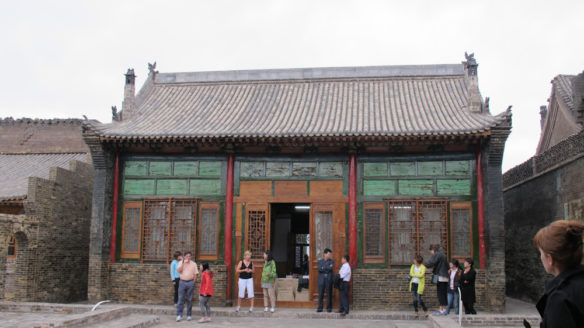
The house at 12 Mijia Xiang is also a community center with a lecture hall, reading rooms, and studios where local artisans can create and display their work.
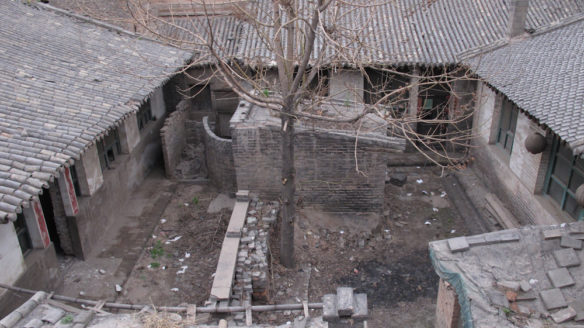
Looking over the wall, I could clearly see the contrast between what the house had been—an ancient building falling into decay—and what it is today.
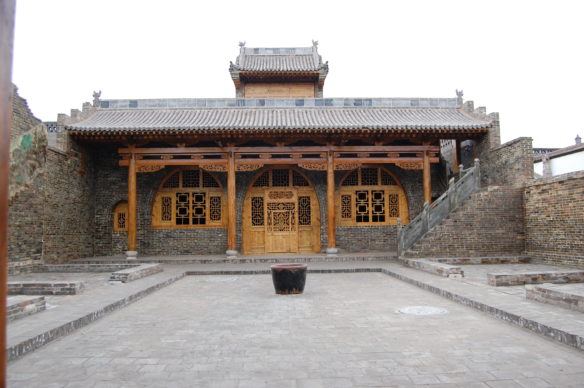
GHF’s transformation of these courtyard houses amazed me, especially considering the modest size of their budgets compared to restoration projects elsewhere.
HERITAGE CONSERVATION AND FANJIA JIE HISTORIC STREET PROJECT
To give us an overview of the work being done here, the Global Heritage Fund team invited some top local government officials to address us. They were led by Li Jin Sheng, Chief Planner of Housing & Urban Development and Director of Urban Planning of Shanxi.
For the twenty-year Fanjia Jie Street project, GHF first surveyed the local architecture, then gathered family histories and stories, and finally drafted a Master Conservation Plan.
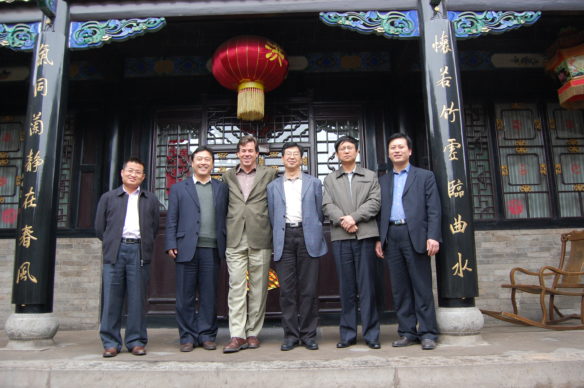
Jeff Morgan (center) with government officials involved in the complex development and construction plan. The planning process included consideration of the area’s most pressing problems: urbanization, poor living conditions (no toilets or running water), improper waste disposal, and lack of funds for technology and conservation.
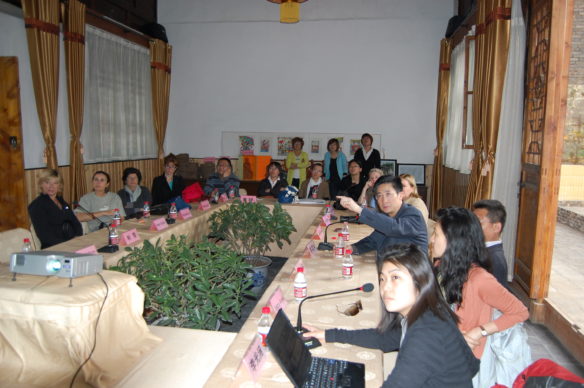
Board members of GHF and professors from Shanghai’s Tonji University, co-sponsors of the project, presented the Pingyao Master Conservation Plan.
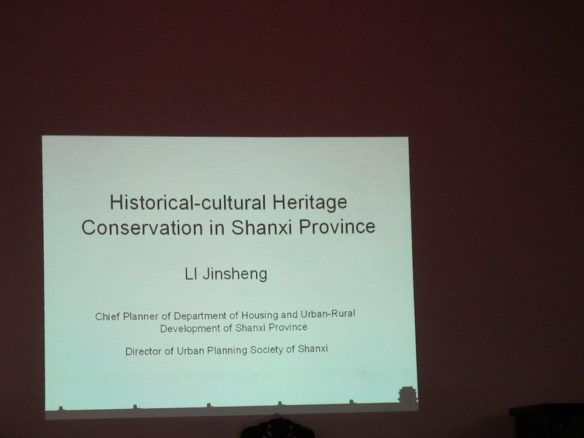
The goal of GHF’s Master Conservation Plan was to renovate the Fanjia Jie historic street as a model for other such initiatives, preserving the vernacular architecture, revitalizing and stimulating traditional arts, and establishing historic areas.

At the time, thirty-one courtyard houses were in need of running water and drainage, and some modern concrete buildings needed to be demolished to preserve the city’s historic authenticity.
REVIVING ANCIENT CRAFTS
Heritage groups are also looking at ways to encourage local and regional crafts such as woodblock printing, paper cutting, and the making of baskets, opera dolls, cloth shoes, and lacquerware.
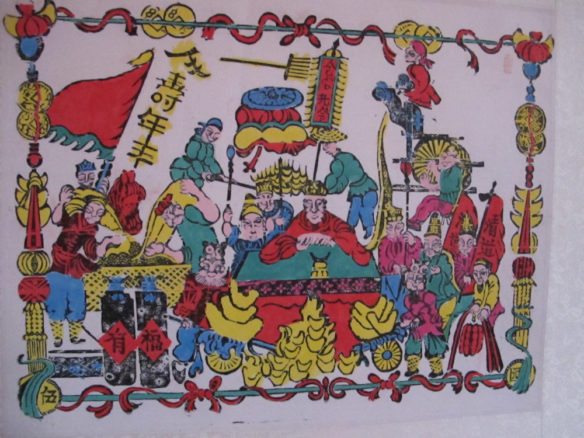
Many ancient woodblock prints were destroyed during the Cultural Revolution, but some have been salvaged. Today, apprentices are learning the trade so that they can restore what has been damaged, recreate what was lost, and keep the art form alive.
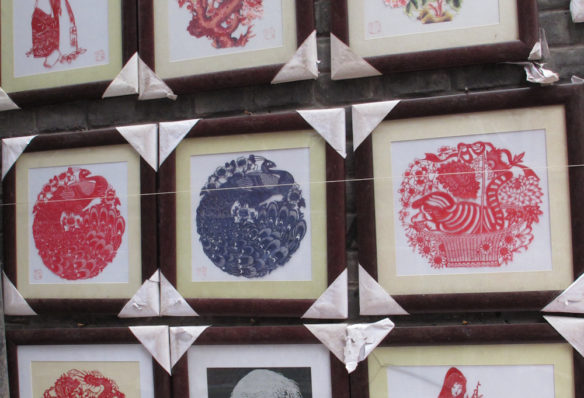
The indigenous Chinese art of paper cutting (jianzhi) became popular during the Qing Dynasty and is still used to decorate windows, lanterns, lamps, and gifts.

Chinese opera dolls are miniature versions of characters from Chinese operas, intricately costumed and made up.
MY PRESERVATION THOUGHTS
One thing became crystal-clear to me during my wonder-filled trip to China’s remote areas: If we don’t protect architecture and cultural artifacts worldwide, cities around the globe will all look the same.
Our group was surprised to learn that GHF had needed just $100,000 to restore the model courtyard house at 12 Mijia Xiang. Some of us immediately began fantasizing about buying and renovating a private courtyard house as a country home. Then reality intruded. Travel to Pingyao is challenging, as it is far from any big city. It lacks greenery, parks, and flowers. And, though we were taken with the moody patina of the town, its gray skies, gray buildings, gray earth, and gray tile roofs might ultimately prove monotonous.
In my next post, I share my experiences on Day 6, when we visited three significant temples around Pingyao.
Visit globalheritagefund.org to learn more about the Global Heritage Fund.
LINKS TO OTHER POSTS IN THIS SERIES
Part 1: Days 1 and 2—Visiting Hakka tulous (earthen residences) in Fujian Province.
Part 2: More of Day 2 and Day 3—The historic port town of Zhangzhou, plus more tulous in Pinghe and Nanjing counties.
Part 3: Day 4—Our first day in the ancient walled city of Pingyao.
Photographs by Jeanne Lawrence & Global Heritage Fund.
*Urbanite Jeanne Lawrence reports on lifestyle and travel from her homes in San Francisco, Shanghai, and New York, and wherever else she finds a good story.

Great shots.